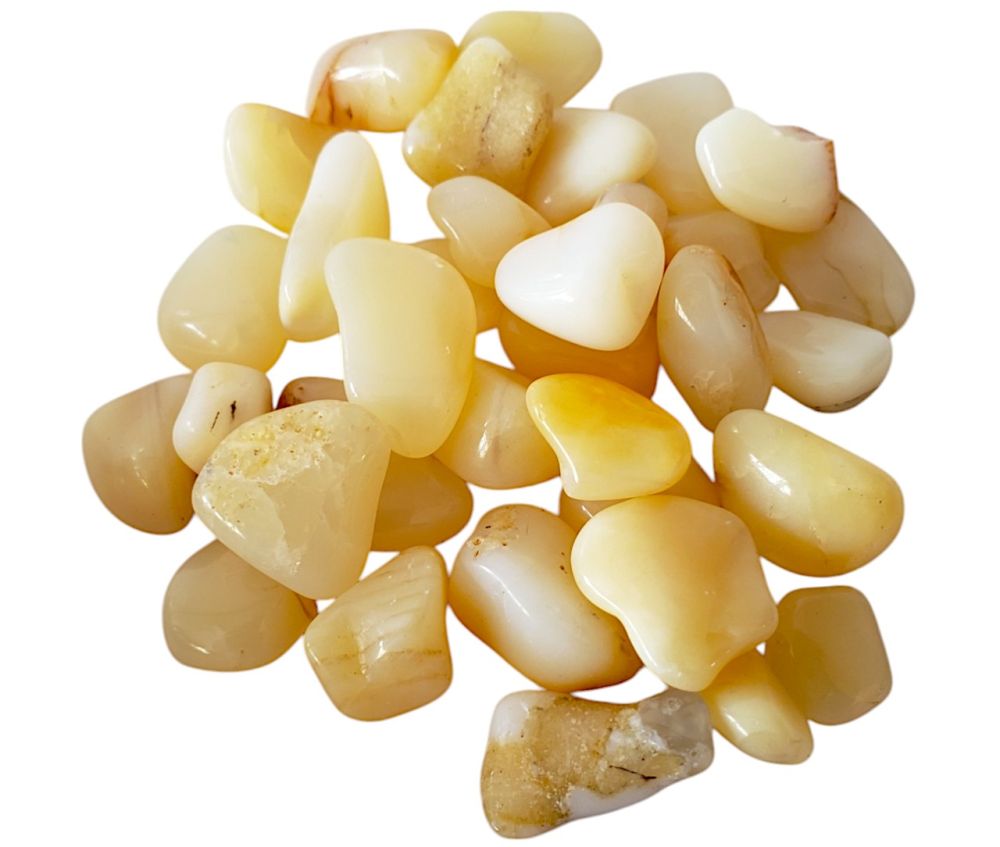We use cookies to make your experience better.
TimmersGems has a new website, existing customers also need to register again.
Opal - yellow (Yellow Milk Opal) tumbled stones from Brazil
Moeilijk te vinden in de markt; gele opalen komen alleen voor in Honduras en soms in Brazilië, zeer fraaie kwaliteit.
Availability:
In stock
SKU
122145
- Buy 3 for €79.00 each and save 20%
The mineraloid opal is an amorphous variety of quartz, SiO₂·nH₂O, hydrated silicon dioxide with a water percentage of sometimes as much as 20%. Opal can be colourless, white, milky blue, grey, red, yellow, green, brown, or black. Often, many of these colours can be seen immediately, caused by the interference and diffraction of light passing through tiny, regularly arranged openings within the microstructure of the opal, known as the Bragg lattice. These openings are filled with secondary silica and form thin lamellae within the opal during hardening. We refer to this unique and beautiful phenomenon as opalescence, but a more accurate term would be 'play of colours'. Opal is one of the minerals that form or can replace fossils. Collectors collect the resulting fossils. "Opal" is derived from the ancient Indian word 'upala', meaning gemstone. A distinction is made between the sparkling precious opals, the yellow-red fire opals and the common opals. Their physical properties show important differences. Opal is the official gemstone of South Australia. Opal has been worked as a gemstone since ancient times. Initially, people used opal to manufacture primitive tools, and later, they used it to create ornamental objects. Opal was already used by the Assyrians, Babylonians and Romans. Precious opal is one of the most mysterious stones. In the past, people believed that precious opal could bring misfortune, particularly to those who neglected to properly clean it. The noble opal described by Pliny came from the Dubník deposits in Slovakia, which were already being mined at that time. Magical powers were attributed to this stone. It helped with melancholy, calmed the nerves, healed the heart, protected against worries, restored the eyesight and made the eyes shine again. Apart from its natural occurrence, various experimental and commercial methods produce opal. The resulting material can be distinguished from natural opal by its regularity; under magnification the patches of colour are seen in a “lizard skin” or “chicken wire” pattern. Synthetic opals are further distinguished from natural opals by the former’s lack of phosphorescence under UV light. Furthermore, synthetic opals are generally lower in density and are often highly porous; some can even stick to the tongue. Two notable producers of synthetic opal are the companies Kyocera and Inamori in Japan. However, most so-called synthetic opals are more correctly called imitations, as they contain substances not found in natural opal (e.g., plastic stabilisers). Gilson opals, often seen in fine jewellery, are actually imitations, consisting of laminated glass with scattered bits of foil.
| Dimensions | Divers |
|---|---|
| Country of Manufacture | Brazil |












